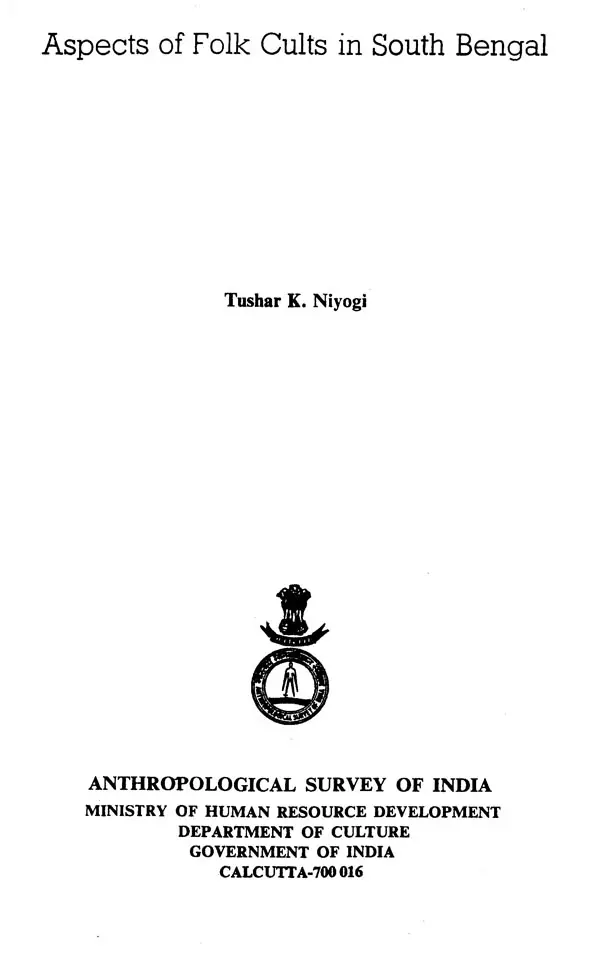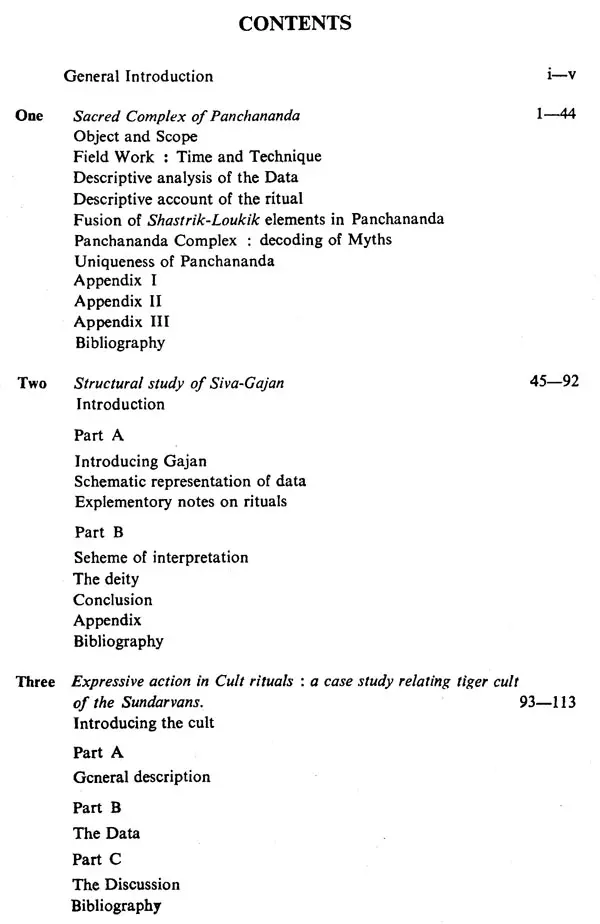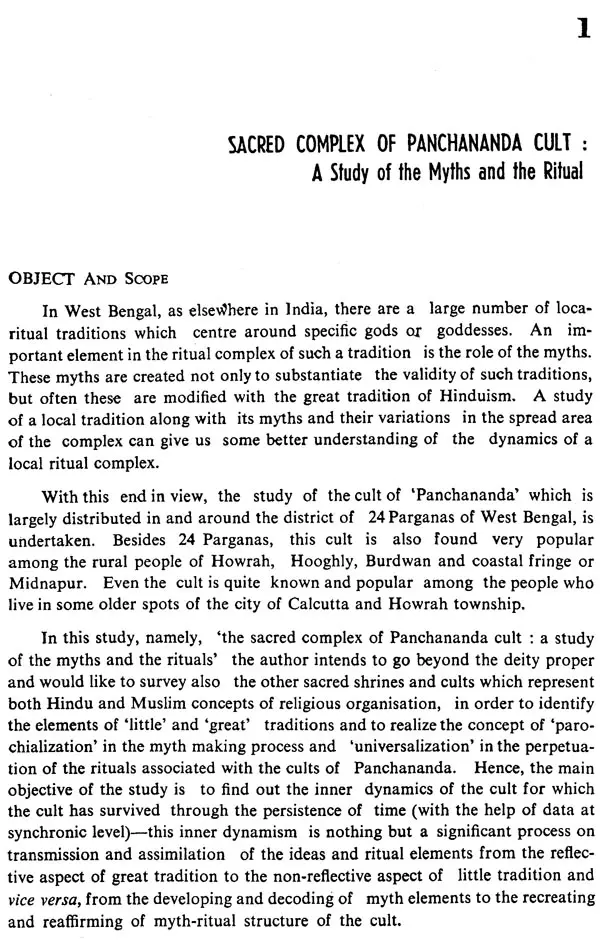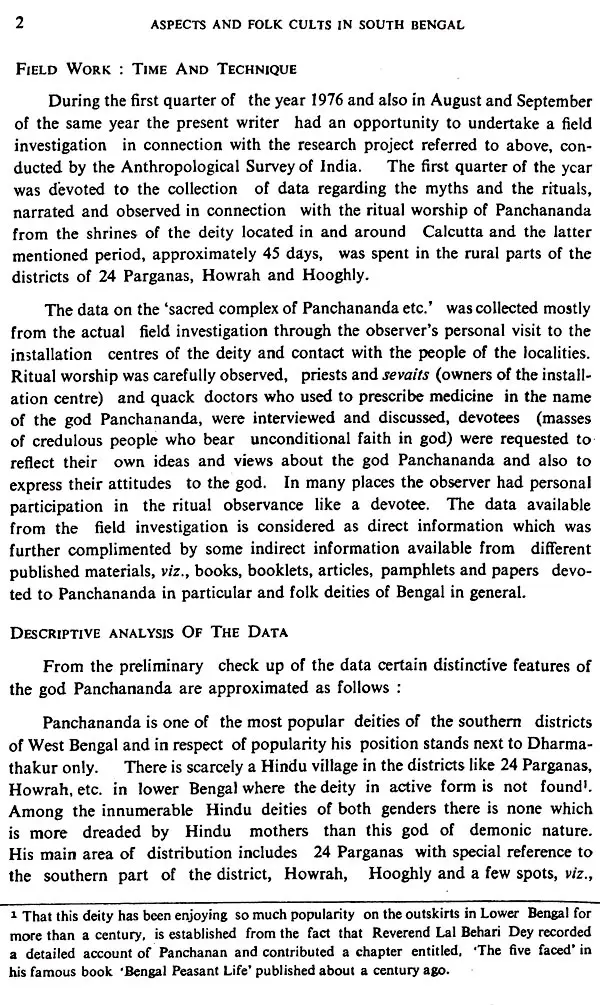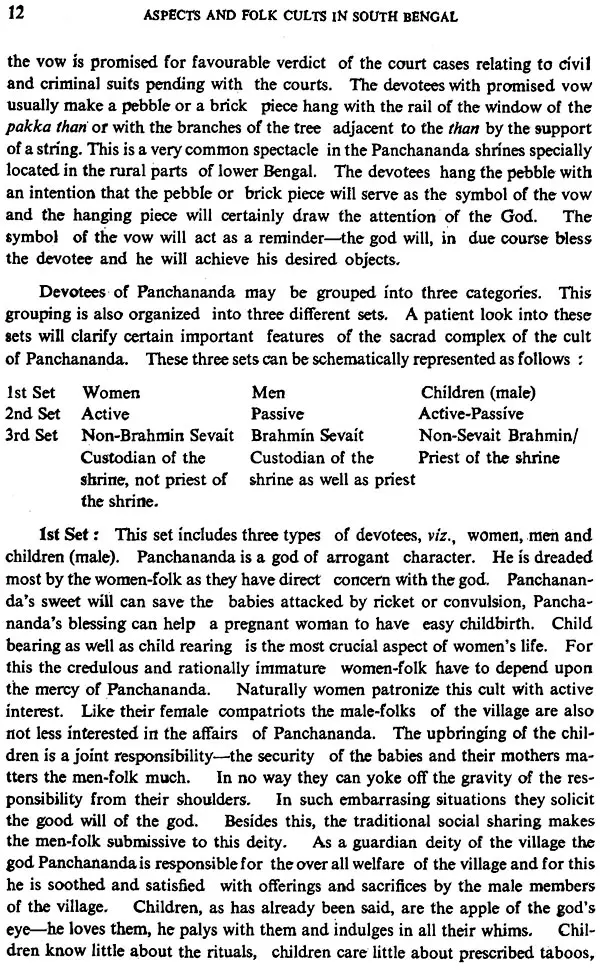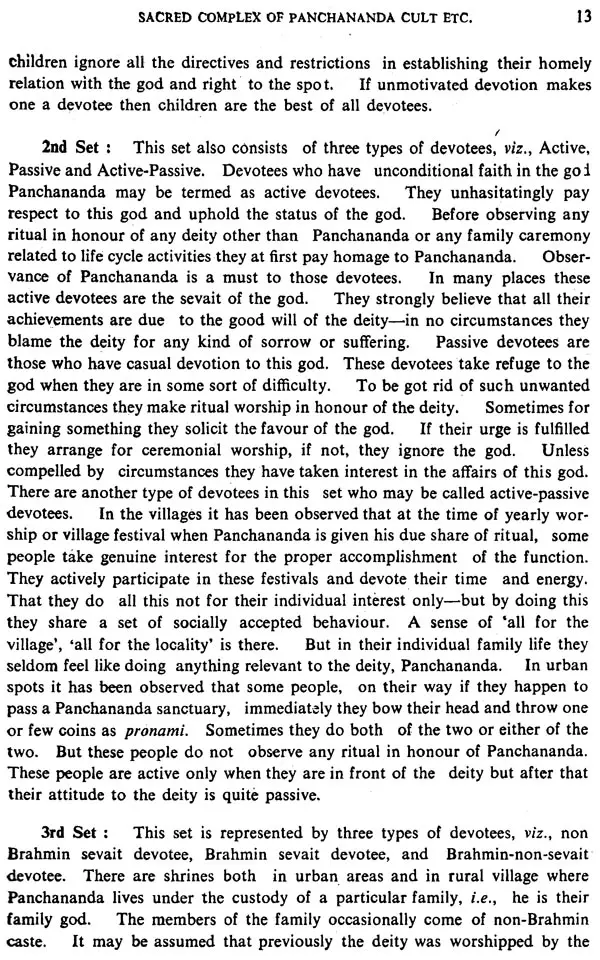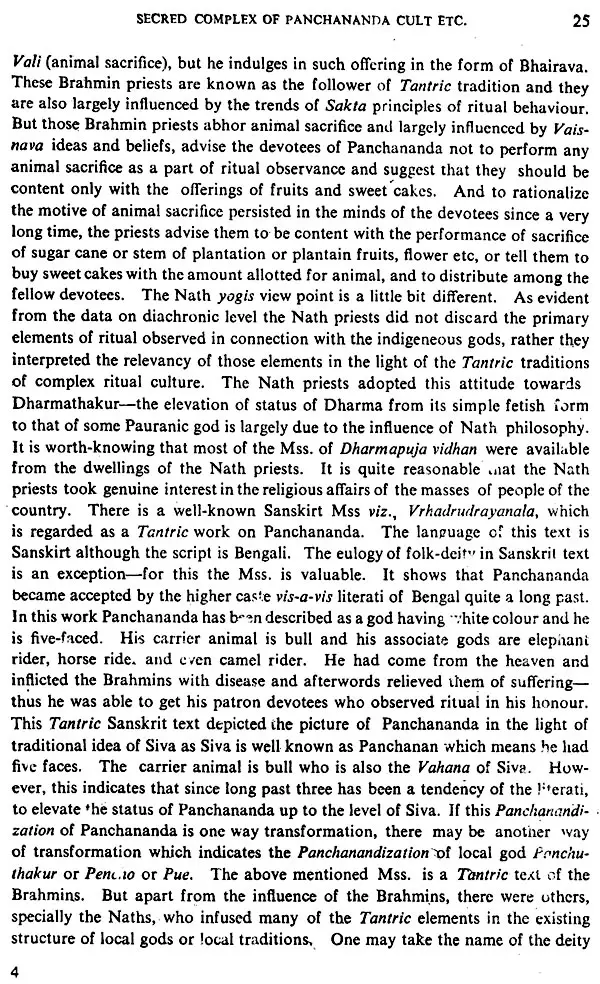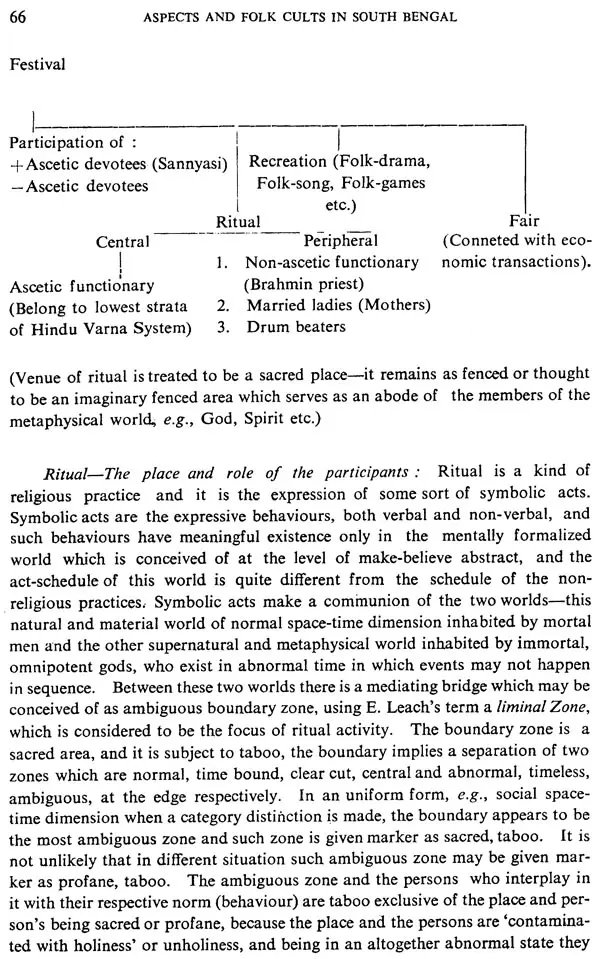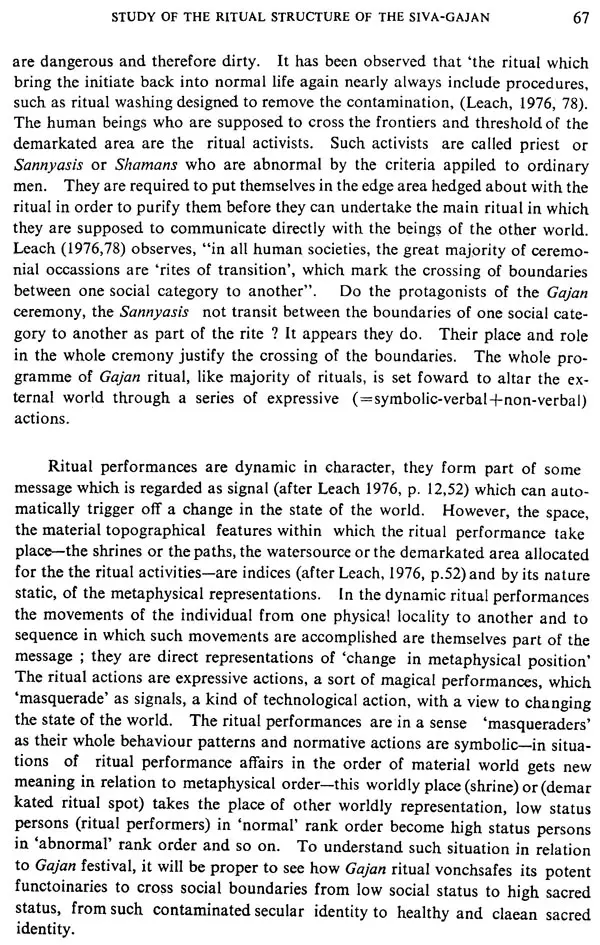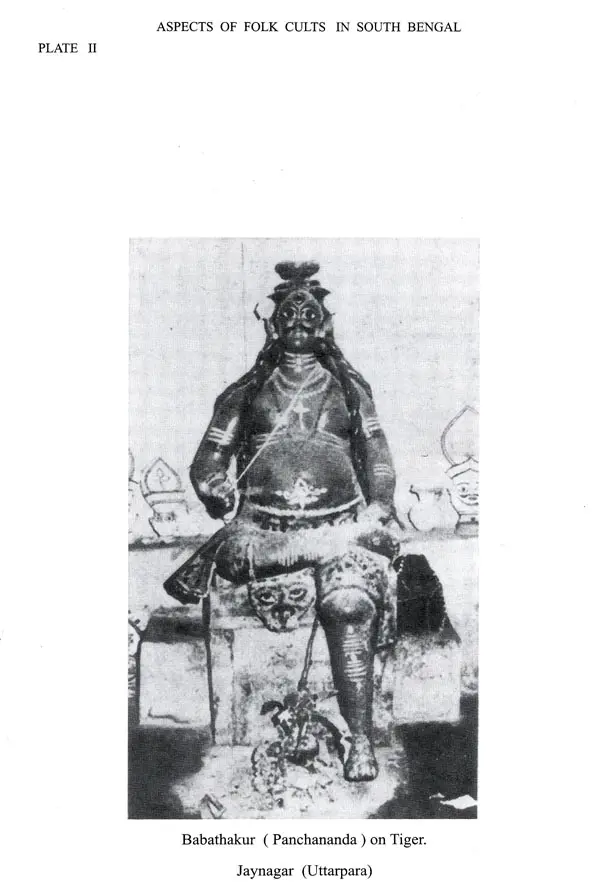
Aspects of Folk Cults in South Bengal
Book Specification
| Item Code: | UBF190 |
| Author: | T. K. Niyogi |
| Publisher: | Anthropological Survey of India, Kolkata |
| Language: | English |
| Edition: | 2009 |
| Pages: | 129 (B/W Illustrations) |
| Cover: | HARDCOVER |
| Other Details | 9.50 X 6.50 inch |
| Weight | 380 gm |
Book Description
The present volume is, in a sense, a three-in- one publication.
Three papers on cult, worship and ritual have been put under one jacket with a view to showing their underlying relationship in- spite of their apparent differences at respective title page. These papers by and large have highlighted a uniform cult tradition of the non-literate masses of a spread area complex of South Bengal.
The essays emphasize the purposive ends of the ritual worship of the cult tradition and the deities. In the sphere of folk motivation, the deities, viz, Panchananda, Loka-Siva and Banabibi-Narayani complex, despite their separate identity, notionally form the part of one unifying cult complex.
This volume has tried to impress the readers with the idea that how folk-cults maintain their identity in the face of contact situation between the traditions, and retain their core element in a comparatively distinctive homogeneous setting.
Dr. Tushar K. Niyogi (B. 1940). Research Associate (Folklore). Anthropological Survey of India, Calcutta. M.A. in Modern Indian Language (Bengali) in 1963 and Diploma in Chinese in 1968 from the University of Calcutta. He obtained his Ph. D. on Folk-elements in Mediaeval Bengali Religious Literature (Mangalkavyas) in 1973 from the same University. He has been associated with the survey since 1964. He had extensive field exposure in Tripura and in West Bengal especially in deltaic districts of lower Bengal.
His field of Study: aesthetic dimension of tribal and folk-culture; expressive behaviour in cult-rituals; folk therapeutics; animal lores; universalisation of minor deities, and sacred fairs.
Publications: Kerala ebang Andaman- Nicobarer Adibasi (1977); Folktales and Myths of Riang and Tripuri Communities (1983). Some of his other papers: Universalisation of a local deity, Panchananda: a case study; Rethinking folklore in the light of anthropological methodology; Folk society and folk songs of Bengal; A study of Tripuri proverbs; Glossary of Technical terms in social anthropology (Bengali). Emergence of Shani in the Perspective of culture contact, Sacred bath ceremony at Gangasagar, and The Tiger Cult of the Sundarbans etc, are awaiting in Press.
This volume is the collection of three essays on Folkcults of South Bengal. The papers are actually reports based on three separate field studies undertaken in different villages of South Bengal during a span of five years from 1975 to 1980. Each paper is an outcome of specific project and written in isolation. However, it has been deemed relevant to bound them in one volume since, despite their apparent differences, they have, by and large, highlighted a sort of uniform cult tradition of the nonliterate masses of a spread area complex of South Bengal. The area under study mainly includes the villages of 24 Parganas, Howrah and Hoogly of West Bengal. Amidst innumerable folk deities associated with minor cults, atleast these three, Panchananda, Loka-Siva and Banabibi, have been found much popular and comparatively important in the myth-ritual structure of this area. Comprising of three essays, this treatise has made an attempt to assess the place and role of these deities, as they exist at the present time in the ritualistic ethos of the people.
This work owes its present form to many sources as has been indicated in the bibliography, and to many scholars whose ideas, concepts, and understading of the folk-cults I have utilised indiscrimiately to enrich my methodological stand. In this regard I acknowledge the cooperation of Dr. N. C. Chowdhury. Ex. Deputy Director, Dr. Shrikrishan, Ex-Senior Linguist, Shri Dipankar Dasgupta, Linguist. Dr. G. M. Trivedi, Sr. Linguist of the Anthropological Survey of India, Calcutta, with heartfelt thanks. I am also grateful to Dr. Ajit K. Danda, Director, Anthropological Survey of India, who despite his busy schedules and pre-occupations has kindly gone through the manuscript and favoured me with his foreward for this book.
As a dimension of non-verbal expression of foklore, folkcults along with its rituals and myths occupy an important position in the study of fokloristics. Although folklorists have endeavoured their initial stress on the oral traditions of the non-literate people, they never disregarded the nonverbal items of mass communication. In actual cult worship of traditional order both the nonverbal and the verbal items get equal attention because both these items are thought to be the part of the 'ritual repertoire' of cult traditions. This has been found materially true when we take up the problems of mythritual traditions of cult worship of different non-literate caste groups and religious communities distributed in South Bengal.
**Contents and Sample Pages**
